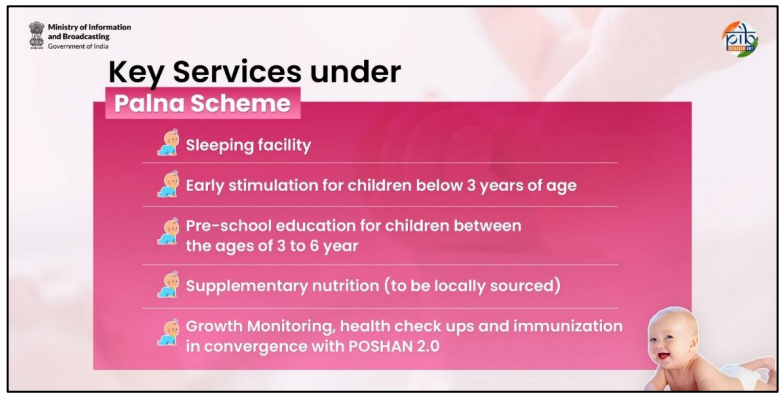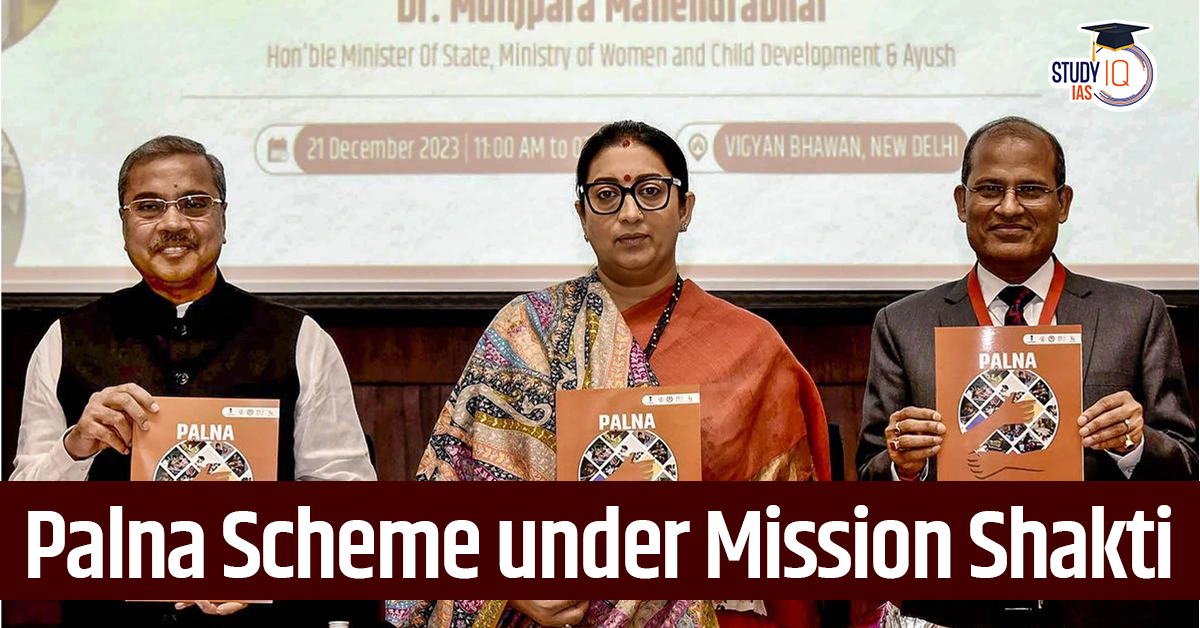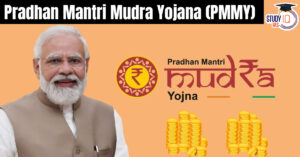Palna Scheme
- Palna Scheme was introduced by reorganizing the National Creche Scheme. It was implemented under the ‘Samarthya’ sub-scheme of Mission Shakti.
- Mission Shakti aims to strengthen interventions for women’s safety, security and empowerment.
- The term “Palna” means “cradle” and reflects the scheme’s focus on care and protection for abandoned and orphaned children, especially those below the age of 6.
- It was launched to support working mothers by providing quality childcare services.
- Palna is a centrally sponsored scheme.
- It guarantees the State/ UT government participation to facilitate greater day-to-day monitoring and effective implementation of the scheme and is executed with a funding pattern of 60:40 between Centre and State Governments and UTs
with legislation except North East & Special Category States where the ratio is 90:10. For UTs without legislature, 100% of funding is done by the central government.
- It guarantees the State/ UT government participation to facilitate greater day-to-day monitoring and effective implementation of the scheme and is executed with a funding pattern of 60:40 between Centre and State Governments and UTs
| Region | Centre’s Share | State/UT Share |
| General States | 60% | 40% |
| North-Eastern and Special Category States | 90% | 10% |
| UTs with Legislature | 60% | 40% |
| UTs without Legislature | 100% | 0% |
- Target: To establish 17,000 creches nationwide by 2025-26.
- A creche is a daycare centre providing a safe and nurturing environment for children while parents work, focusing on health, nutrition, safety and age-appropriate education.
- Nodal Ministry: Ministry of Women & Child Development.
Use code “BLOG“ to Avail of “20% OFF“ Applicable on All Courses Including Books & Test Series
Objectives of the Palna Scheme
The aim of the Palna scheme is to offer quality crèche facility in a safe and secure environment for children (ages 6 months – 6 years), nutritional supplementation, children’s health and cognitive development growth monitoring & immunization. Crèche facilities under Palna are distributed to all mothers, regardless of their working status.
Key Features of Palna Scheme
- Provides daycare for children aged 6 months to 6 years.
- Offers integrated services: sleeping facilities, early stimulation, preschool education, supplementary nutrition, health check-ups and immunization.

- The Palna scheme has two components: Anganwadi-cum-Creches and Standalone Creches.
Support Provided under the Scheme
- Shelter, food, clothing, and medical care.
- Age-appropriate education and emotional support.
- Integration with adoption agencies under the Juvenile Justice Act, wherever possible.
Implementation
The program is implemented by Child Care Institutions (CCIs), Specialised Adoption Agencies (SAAs), and in consonance with the State Governments and Union Territories.



 Niveshak Didi Initiative Phase 2 launche...
Niveshak Didi Initiative Phase 2 launche...
 Panchayat Advancement Index (PAI), State...
Panchayat Advancement Index (PAI), State...
 10 Years of Pradhan Mantri Mudra Yojana ...
10 Years of Pradhan Mantri Mudra Yojana ...





















